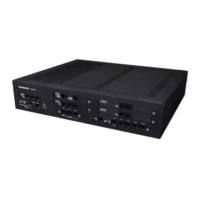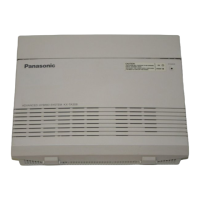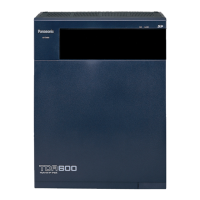b. Day/Night/Lunch button
c. Day/Night/Break button
d. Day/Night/Lunch/Break button
Each of these buttons is used for switching between modes. For example, pressing the Day/Night button
switches between day and night modes. All of these buttons show the current status as follows:
Light Pattern Status
Off Day mode
Red on Night mode
Green on Lunch mode
Slow green flashing Break mode
Slow red flashing Holiday mode
Note
Any extension user (except extension users allowed to change the mode) can only check the current
status on the display by pressing the Time Service button.
Conditions
• System programming can set the following time periods:
– Day-1 (Day Start time)
– Lunch (Lunch Start time)
– Day-2 (Lunch End time)
– Night (Night Start time)
– Break-1 Start
– Break-1 End (Day restart)
– Break-2 Start
– Break-2 End (Day restart)
– Break-3 Start
– Break-3 End (Day restart)
• One-look Networking (® 4.2 One-look Networking
)
In
Automatic Switching mode, system programming specifies which PBX’s clock is used to determine the
time mode when a time-mode-dependent feature is used. One of the following 2 options can be specified:
– The local PBX of the device or trunk that is using the feature
– The PBX site to which the Time Table’s tenant is assigned
® 14.6 PBX Configuration—[6-6] Feature—Tenant—
Time Service Mode
• Time Service Switching Mode
(Automatic/Manual) Button
A flexible button can be customised as the Time Service Switching Mode (Automatic/Manual) button.
PC Programming Manual References
10.4 PBX Configuration
—[2-4] System—Week Table
10.5 PBX Configuration—[2-5] System—Holiday Table
10.6.1 PBX Configuration—[2-6-1] System—Numbering Plan—Main—Features—
Time Service (Day /
Lunch / Break / Night) Switch
10.7.1 PBX Configuration—[2-7-1] System—Class of Service—COS Settings—Manager— Time Service
Switch
12.1.4 PBX Configuration—[4-1-4] Extension—Wired Extension—Flexible Button
Feature Guide 449
5.1.4 Time Service

